Disclosure: This post may contain affiliate links, meaning we get a commission if you decide to make a purchase through our links, at no cost to you. See our full disclosure here.
Welcome to the Wonderful World of Gardening (and You Don’t Have to Be a Guru!)
Alright, dirt divas and dudes, gather ’round! Let’s talk about gardening. Or, more accurately, let’s talk about my gardening journey, which, let’s say, started with a graveyard of innocent houseplants. Yeah, I’m talking ferns that looked like they’d lost a fight with a lawnmower, succulents that shriveled up faster than a politician’s promise, and even a cactus that somehow managed to die of thirst. I swear, I could kill a plastic plant.
But here’s the thing: It’s okay! We’ve all been there. Every gardener, from the most seasoned pro to the newbie who’s just discovered the joy of dirt, has murdered a plant or two (or ten). It’s part of the process, my little sprouts. It’s how we learn, grow (pun intended!), and eventually transform from plant killers into plant whisperers.

And that’s where I come in. I’m Ivy Green, your sassy guide for gardening success, and I’m here to tell you that you don’t need a green thumb to grow your own way. Seriously, forget everything you think you know about gardening. This ain’t your grandma’s gardening blog (unless your grandma is super cool, in which case, high five!).
At DirtDivaDiaries.com, we’re all about ditching the drudgery and embracing the fun. We’re about getting our hands dirty, learning from our mistakes, and celebrating every little victory, from the first sprout to the overflowing harvest.
Whether you’re a total newbie who’s never even held a trowel or you’ve dabbled in gardening before but haven’t entirely found your groove, this guide is for you. We’re going to break down the basics in a way that’s easy to understand, even if you think “compost” is something you throw away. Because gardening can be intimidating. All those Latin plant names, complicated techniques, and “expert” advice can make it seem like you need a PhD in botany to grow a tomato.
But I’m here to tell you that’s hogwash. Gardening is for everyone. It’s for the city dweller with a balcony full of pots, the suburbanite with a sprawling backyard, and everyone in between. It’s for the person who wants to grow their own food, who’s looking for a relaxing hobby, and who wants to connect with nature.
And let’s not forget the perks! Fresh, homegrown veggies that taste a million times better than anything you can buy in the store. The satisfaction of nurturing a tiny seed into a thriving plant. The stress relief of digging in the dirt and getting your hands dirty. And, of course, the bragging rights when you show off your gorgeous garden to your friends and neighbors. Trust me, there’s nothing quite like the feeling of serving up a salad made with lettuce you grew yourself.
So, are you ready to unleash your inner gardener? Let’s get growing! Remember, at DirtDivaDiaries.com, we “grow our own way,” so let’s find your way to gardening success.
Gardening for Beginners: The Basics You Need to Know (But Won’t Bore You to Death)
Alright, my little sprouts, let’s dive into the nitty-gritty–the basics of gardening that you need to know, but I promise I won’t bore you to tears. Please think of this as your gardening crash course without the final exam (unless you count your overflowing harvest as the test, which I totally do!). Remember, at DirtDivaDiaries.com, we “grow our own way,” so these tips are about finding what works for you.
Looking for something specific? Feel free to skip around to the parts you need most!
- Planning your Garden – all about location, size, and picking plants
- The Dirt on Dirt – details on different soil types, testing your soil, and amending your soil
- Tools of the trade – must have tools, bonus tools, and finding affordable tools
- Planting your seeds – info on starting seeds indoors, direct sowing, and transplanting seedlings
- Watering Wisdom – learn about how much water, when to water, and how deep to water
- Weeding Woes – why weeding is important, how mulching helps, and hand weeding
- Fertilizing fun – learning when and how to fertilize, picking organic vs synthetic
- Common garden pests and problems – help for troubleshooting pests and diseases in your plants
- Celebrating your harvest – find out when to harvest, how to store your harvest, and sharing the joy of your harvest
- Other Resources – links for wherever the next step on your journey is leading you!
Planning Your Garden: Because Winging It Doesn’t Always Work (But Sometimes It Does!)
First things first, let’s talk about planning. Now, I know what you’re thinking: “Planning? Ugh, sounds boring.” But a little planning goes a long way, especially when you’re just starting out. Think of it as laying the foundation for your gardening empire (or, you know, your little patch of paradise).
Location, Location, Location! (No, I’m Not Talking Real Estate)
Just like buying a house, the location of your garden is key. Plants, like us, need sunlight to thrive. Some are sun-worshippers, while others prefer the shade. Think of it like choosing a beach vacation vs. a cozy cabin in the woods. You wouldn’t wear a bikini in the snow, would you? (Okay, some people might, but you get my point.)
- Full Sun: Your garden gets at least six hours of direct sunlight daily, perfect for sun-loving veggies like tomatoes, peppers, and cucumbers.
- Partial Sun/Partial Shade: Four to six hours of sunlight, with some shade during the hottest part of the day. This is great for leafy greens, herbs, and some flowers.
- Full Shade: Less than four hours of sunlight. Think leafy greens that don’t mind the heat, like spinach and lettuce, or shade-loving herbs like mint.
Size Matters (But Start Small, My Friends!)
Don’t try to conquer the gardening world on day one. Start small. Seriously, I mean it. A tiny herb garden on your windowsill or a small raised bed is a great way to get started without feeling overwhelmed. You can always expand later once you’ve got the hang of things. Think of it like learning to swim–you wouldn’t jump into the deep end right away, would you? (Unless you’re a daredevil, in which case, go for it!)
What to Grow: Easy-Peasy Plants for Beginners (Because We’re Not Trying to Win the Chelsea Flower Show)
Now for the fun part: choosing what to grow! When you’re just starting out, it’s best to stick with easy-peasy, more forgiving plants. Think of them as your gardening training wheels. Here are a few suggestions:
- Herbs: Mint, basil, parsley, chives–these are all relatively easy to grow and can be used in all sorts of dishes. Plus, they smell amazing!
- Salad Greens: Lettuce, spinach, and arugula grow quickly and can be harvested multiple times. They make an instant salad bar!
- Radishes: These little root veggies are super fast growers, so you’ll see results quickly, which is always encouraging.
Ivy’s Top 5 Beginner Plants (With Pictures, Because I’m Nice Like That)
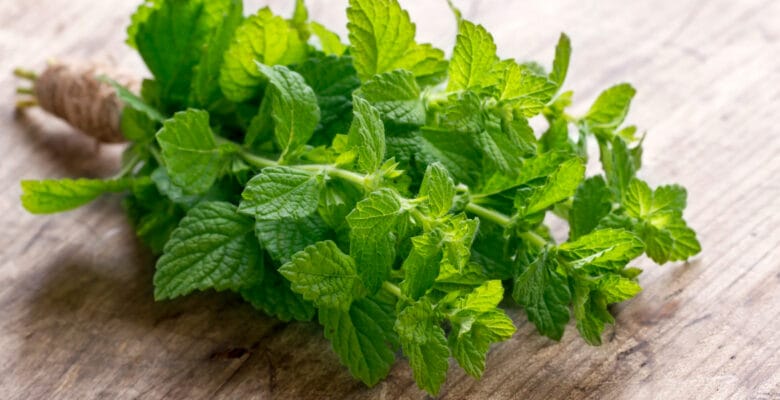
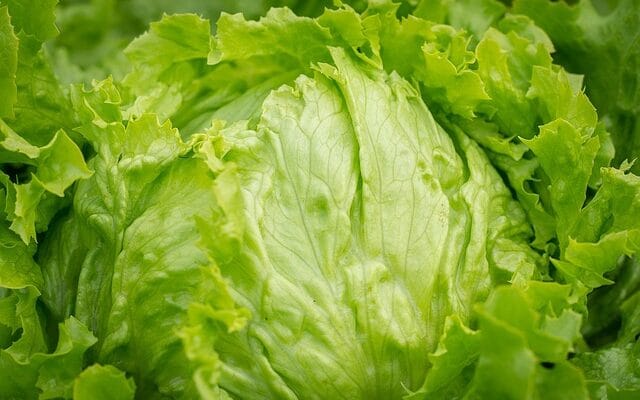
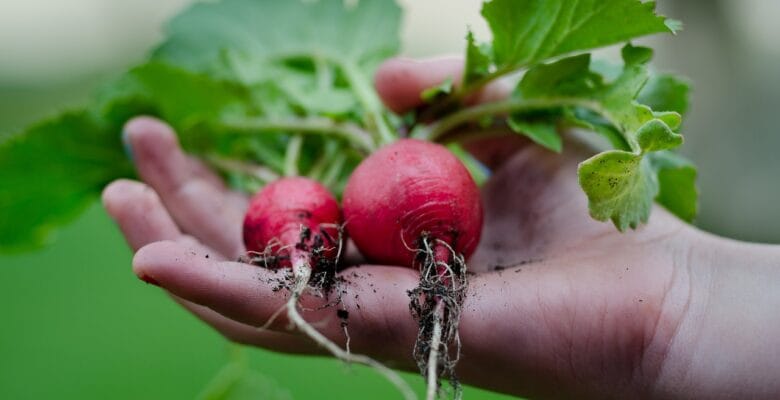
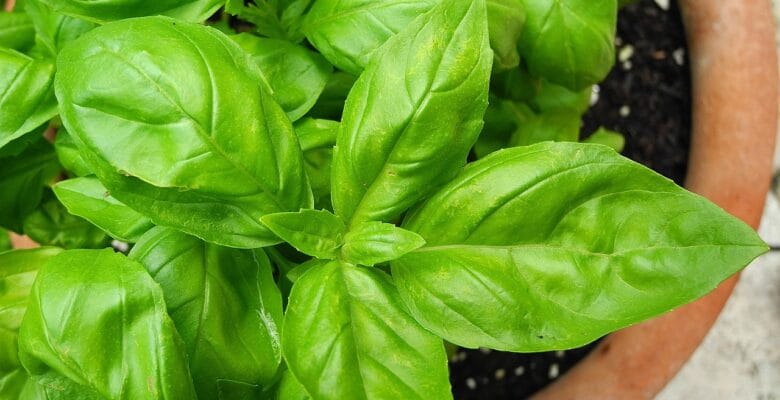

- Mint: Hardy, fragrant, and perfect for mojitos (just sayin’).
- Lettuce: Comes in all shapes and sizes, and you can harvest it leaf by leaf.
- Radishes: Spicy, crunchy, and ready to eat in a few weeks.
- Basil: Essential for pesto and adds flavor to just about everything.
- Chives: Mild onion flavor, great for adding to salads and dips.
So there you have it, my little green thumbs in training! The basics of planning your garden. Remember, at DirtDivaDiaries.com, we “grow our own way,” so don’t be afraid to experiment and find what works for you. Now, let’s get our hands dirty!
Alright, my little earthworms, let’s talk about dirt! Yes, you heard me right, dirt. Because without good dirt, you ain’t gonna have good plants. Think of soil as the foundation of your garden, the cozy tiny home for your roots. And just like you wouldn’t build a house on a swamp (unless you’re into that sort of thing), you need to ensure your soil is up to snuff. Remember, at DirtDivaDiaries.com, we “grow our own way,” which starts with understanding the dirt beneath our feet.
The Dirt on Dirt: It’s Not All Created Equal (Sadly)
Now, I’m not going to get all sciency on you here. We’re not talking about taking a soil science exam. But it’s helpful to know a bit about the different soil types. It is like knowing the difference between a fluffy cloud and a dense fog. They’re both water, but they sure act differently!
- Sandy Soil: This soil is light and airy, like beach sand. It drains quickly, which can be good, but it also means that water and nutrients can wash away easily. Think of it as the social butterfly of soils–always on the go.
- Clay soil is heavy and dense, like modeling clay. It holds onto water and nutrients well, which can be good but can also become waterlogged if it doesn’t drain properly. Think of it as the homebody of soil—it likes to stay put.
- Loamy Soil: This soil is the Goldilocks of soils–it’s a perfect mix of sand, silt, and clay. It drains well but holds enough water and nutrients to keep plants happy. Think of it as the well-balanced soil–the best of both worlds.
Testing Your Soil (Optional, But Good to Know–Like Knowing Your Blood Type)
Now, you don’t have to test your soil, but knowing what you’re working with is helpful. Think of it like getting a check-up at the doctor–it’s good to know what’s going on under the hood (or, in this case, under the ground). You can buy a soil testing kit at your local garden center or send a sample to a lab. They’ll tell you what kind of soil you have and what nutrients it might lack.
Amending Your Soil: Making Your Dirt Even Better (Like Adding Chocolate Chips to Cookie Dough)
No matter what kind of soil you have, you can improve it by adding amendments. Think of amendments as the secret ingredients that make your soil even better.
- Compost: This is like black gold for your garden. It’s made from decomposed organic matter, like kitchen scraps and yard waste. Compost adds nutrients to your soil, improves drainage, and helps it keep moisture. It’s like giving your plants a vitamin boost!
- Fertilizer: This is like giving your plants a shot of caffeine. It provides them with the essential nutrients they need to grow. Different fertilizers are available, so choose one that’s appropriate for your plants. Don’t overdo it–too much fertilizer can be worse than insufficient.
So there you have it, my little dirt divas and dudes! The lowdown on soil.
Tools of the Trade (You Don’t Need a Million):
Alright, my little tool-wranglers, let’s talk about the gadgets and gizmos that’ll make your gardening life much easier. I know what you’re thinking: “Do I really need all those fancy tools I see in the gardening magazines?” The answer, my dears, is a resounding NO. You don’t need a million tools to be a successful gardener. In fact, you can get started with just a few essentials. Think of it like cooking–you don’t need a kitchen full of gadgets to whip up a delicious meal. Remember, at DirtDivaDiaries.com, we “grow our own way,” which means keeping things simple and fun.
Must-Have Tools for Beginners (Because We’re Not Trying to Build a House Here)
These are the tools that every beginner gardener should have in their arsenal. Think of them as your gardening besties, the ones you’ll reach for repeatedly.
- Trowel: This little guy is your all-purpose digging tool. Perfect for planting seedlings, digging up weeds, and getting your hands dirty. Think of it as your gardening Swiss Army knife.
- Hand Rake: This is great for smoothing the soil, removing debris, and making your garden look nice and tidy. Think of it as your garden comb.
- Watering Can: This is essential for keeping your plants hydrated.2 Choose one that’s easy to carry and has a gentle shower head so you don’t drown your delicate seedlings. Think of it as your plants’ personal rain cloud.
- Gloves: These gloves protect your precious hands from dirt, thorns, and other garden nasties. Think of them as your gardening superhero suit.
Optional Tools (If You’re Feeling Fancy–Or Want to Spoil Yourself)
Once you’ve got the basics down, you might want to add a few more tools to your collection. These aren’t essential, but they can make your gardening life a little easier (and more fun!).
- Gardening Fork: This tool is great for loosening soil and turning compost. Think of it as your soil’s personal masseuse.
- Pruning Shears: Essential for trimming and shaping plants. Think of them as your garden scissors.
- Hoe: Perfect for weeding and cultivating the soil. Think of it as your garden’s secret weapon against weeds.
Pro Tip: Where to Find Affordable Tools (Because We’re Not Made of Money)
Gardening tools can be expensive, but they don’t have to be. Here are a few tips for finding affordable tools:
- Check your local hardware store: They often have sales and discounts on gardening supplies.
- Visit thrift stores and garage sales. You can often find gently used tools for a fraction of the price.
- Ask friends and family: Someone might have some extra tools they want to part with.
So there you have it, my little tool aficionados! These are the essential tools you need to get started in the garden. Remember, at DirtDivaDiaries.com, we “grow our own way,” so don’t feel you need to buy everything at once. Start with the basics and add more tools as you go. Now, go forth and conquer your garden with your trusty tools!
Gardening for Beginners: Getting Your Hands Dirty (Finally!)
Planting Your Seeds or Seedlings:
Alright, my little green sprouts, let’s talk about getting those tiny seeds and seedlings into the ground (or pots, raised beds, or wherever you’re growing your garden of awesomeness). This is where the magic happens, folks–where potential turns into actual plants! Remember, at DirtDivaDiaries.com, we “grow our own way,” so these tips are about making the process as easy and stress-free as possible (for you and your plants).
Planting Your Seeds or Seedlings: The Moment of Truth (No Pressure!)
This is it, the big moment! You’ve planned your garden, prepped your soil, and gathered your tools. Now it’s time to get those little green hopefuls into their new homes. There are a couple of ways to do this: starting seeds indoors and direct sowing. Let’s break it down, shall we?
Starting Seeds Indoors (If Applicable–And If You’re Feeling Fancy)
Starting seeds indoors is like giving your plants a head start in life. It’s a great way to jump on the growing season, especially if you live in a place with a shorter growing season. Think of it like a plant spa–giving them a cozy, controlled environment to germinate and grow before they face the harsh realities of the outside world. Check out our full article on when to start seeds indoors for more in-depth guidance!
- What You’ll Need: Seed-starting trays or pots, seed-starting mix (not regular potting soil!), and a sunny spot or grow light.
- The Process: Moisten the seed starting mix, sow your seeds according to the package directions (usually about ¼ inch deep), and keep the soil consistently moist but not soggy. Think damp sponge, not swamp.

Ivy’s Pro Tip: Label everything! Trust me, you don’t want a tray full of mystery plants. Use popsicle sticks or plant markers to keep track of what you’ve planted.
Direct Sowing: Planting Straight into the Ground (For the Impatient Gardener)
Direct sowing is planting your seeds directly into the ground (or container) where they’ll grow. This method is more straightforward and perfect for plants that don’t like to be transplanted (like root vegetables) or for those who want to get their hands dirty ASAP.
- What You’ll Need: Your prepared garden bed or container, seeds, and patience.
- The Process: Follow the spacing and depth instructions on your seed packet. Dig a small hole, drop in the seeds, and gently cover them with soil and water.
Ivy’s Pro Tip: Check the weather forecast before you direct sow. You don’t want a sudden frost to kill your precious seedlings.

Transplanting Seedlings: Moving Your Little Ones to Their Forever Homes (Gently!)
If you start your seeds indoors, you’ll eventually need to transplant them into your garden. This can be a little nerve-wracking, but don’t worry—it’s not as scary as it sounds. Think of it like moving a pet–you want to be gentle and make sure the pet is comfortable in its new home.
- What You’ll Need: Your seedlings, a trowel, and a little compost or fertilizer.
- The Process: Gently loosen the soil around the seedlings and carefully lift them out of their containers. Dig a hole in your garden bed or container slightly larger than the root ball, place the seedling in the hole, and fill it with soil. Water gently.

Ivy’s Pro Tip: Transplant on a cloudy day or in the evening to avoid shocking your seedlings. And be gentle! Treat those little roots like they’re made of gold (because they are).
So there you have it, my little plant parents! Everything you need to know about planting your seeds and seedlings. Remember, at DirtDivaDiaries, we “grow our own way,” so try new things and discover what is effective for you and your plants. Now go forth and plant, my friends!
Watering Wisdom:
Alright, my little hydration heroes, let’s talk about water–the lifeblood of your garden. Without water, your plants are going to be about as happy as a fish out of water (pun intended, naturally). Remember, at DirtDivaDiaries.com, we “grow our own way,” so these watering tips are all about keeping things simple and effective.
Watering Wisdom: Because Your Plants Can’t Tell You When They’re Thirsty (Usually)
Watering is a tricky business. Too much water and your plants will be swimming in a swamp. Too little, and they’ll be drier than a stand-up comedian’s audience on a Monday night. So, how much is enough?
How Much is Enough? The Finger Test and Other Easy Methods (Because We’re Not Scientists)
Forget about fancy moisture meters and complicated calculations. We’re going old-school here, my friends, with the finger test. Stick your finger about an inch or two into the soil. If it feels dry, it’s time to water. If it feels moist, hold off. It’s that simple!
Here are a few other easy methods to check if your plants need a drink:
- The Look Test: Wilting leaves are a classic sign of dehydration. If your plants look droopy and sad, they’re probably thirsty.
- The Weight Test: Containers will feel lighter when the soil is dry. Lift the pot when it’s well-watered and again when you think it might need water. You’ll feel the difference.
When to Water: Morning vs. Evening (Because Timing is Everything)
The best time to water your plants is in the morning. This gives the leaves time to dry off before nightfall, which helps prevent fungal diseases. Think of it like giving your plants a refreshing shower before they start their day.
Watering in the evening is okay, too, but try to do it early enough so the leaves dry before dark. You don’t want your plants going to bed with wet feet!
Watering Deeply vs. Lightly: Why It Matters (Because Roots Need Love Too)
When you water, it’s important to water deeply. Think of it as offering your plants a helping hand.
Light watering only wets the top layer of soil, which encourages shallow root growth. This makes your plants more susceptible to drought and other problems.
So there you have it, my little water wizards! Everything you need to know about watering your plants. Remember, at DirtDivaDiaries.com, we “grow our own way,” so pay attention to your plants and learn their watering needs. Now go forth and hydrate!
Weeding Woes (and How to Avoid Them):
Alright, my little weed warriors, let’s talk about the dreaded W-word: Weeds. Ugh, I know. They’re the bane of every gardener’s existence. But trust me, dealing with weeds is a necessary evil. Think of it like flossing–you know you should do it, even if you don’t want to. Remember, at DirtDivaDiaries.com, we “grow our own way. ” Sometimes, that means getting down and dirty with some weeds.
Why Weeding is Important (Besides Making Your Garden Look Nicer–Duh!)
Okay, a weed-free garden looks pretty darn good. But that’s not the only reason to wage war on these pesky plants. Weeds are more than just unsightly invaders. They’re like those annoying relatives who show up uninvited and eat all your food. They compete with your precious plants for water, nutrients, and sunlight. They’re garden bullies. And if you don’t keep them in check, they can quickly take over your entire garden, leaving your poor plants struggling to survive.
Mulching Magic: The Lazy Gardener’s Secret Weapon (Shhh!)
Now, I’m all about working smarter, not harder. And that’s where mulching comes in. Mulch is like a magic blanket for your garden. It helps suppress weeds, keeps moisture in the soil, and even adds nutrients as it decomposes. Think of it as a spa treatment for your garden.
There are many mulches you can use:
- Organic Mulches: Straw, wood chips, and shredded leaves are all great options for organic mulches. They decompose over time, enriching the soil.
- Inorganic Mulches: Plastic sheeting and landscape fabric are more durable but don’t add nutrients to the soil.
Ivy’s Pro Tip: For maximum weed-suppressing power, apply a layer of mulch about 2-3 inches thick.

Hand-Weeding Techniques: Get Down and Dirty (But Not Literally Filthy)
Sometimes, despite your best mulching efforts, weeds will still pop up. And when they do, it’s time to get dirty (well, not too dirty–wear gloves!). Hand-weeding is the most effective way to remove weeds, especially small ones.
Here are a few hand-weeding techniques to try:
- Pulling: This is the classic method. Grab the weed at the base and pull it out, ensuring you get as much of the root as possible.
- Hoeing: Use a hoe to slice through the weeds at the soil surface. This is best for larger weeds.
- Cultivating: Use a hand cultivator to loosen the soil and disturb the weeds.

Ivy’s Pro Tip: Weed after it rains or after you’ve watered your garden. The soil will be softer, making it easier to pull out the weeds.
So there you have it, my little weed warriors! Everything you need to know about battling those pesky plants. Remember, at DirtDivaDiaries.com, we “grow our own way,” and sometimes, that means getting a little dirty. Now go forth and conquer those weeds!
Fertilizing Fun (Not Really):
Alright, my little nutrient nerds, let’s talk about fertilizer. Now, I know what you’re thinking: “Fertilizing? Sounds boring.” And you’re correct. It’s not exactly the most glamorous part of gardening. But it’s essential! Think of fertilizer as vitamins for your plants. It gives them the extra boost they need to grow big and strong. Remember, at DirtDivaDiaries.com, we “grow our own way,” which means giving our plants the nutrients they need to thrive.
Fertilizing can be confusing, but it doesn’t have to be. Let’s break it down, shall we?
When and How to Fertilize (If Needed–Because Sometimes You Don’t)
Not all plants need fertilizer. Some plants, like herbs, are happy with good soil and regular watering. But other plants, like heavy feeders like tomatoes and peppers, will benefit from a little extra nourishment.
- When to Fertilize: The best time to fertilize is when your plants are actively growing. This is usually during the spring and summer.
- How to Fertilize: There are several ways to fertilize. You can use liquid fertilizer, granular fertilizer, or slow-release fertilizer. Follow the instructions on the package for how much to use.
Ivy’s Pro Tip: Don’t over-fertilize! Too much fertilizer can be just as harmful as not enough. It can burn your plants and even harm the environment.

Organic vs. Synthetic Fertilizers: What’s the Difference? (Besides the Price)
Now, let’s talk about the difference between organic and synthetic fertilizers. Think of it like choosing between a home-cooked meal and fast food. Both will fill you up, but one is clearly better for you.
- Organic Fertilizers: These are made from natural sources, like compost, manure, and bone meal. They’re better for the environment and for your plants. They release nutrients slowly, so there’s less risk of burning your plants.
- Synthetic Fertilizers: These are made from chemicals. They’re usually cheaper than organic fertilizers, but they can be harsh on the environment and burn your plants if you’re not careful. They release nutrients quickly, which can be good but can also lead to nutrient runoff.

Ivy’s Pro Tip: I’m a big fan of organic gardening, so I always recommend using organic fertilizers. They’re better for your plants, the environment, and your peace of mind.
So there you have it, my little nutrient ninjas! Everything you need to know about fertilizing your plants. Remember, at DirtDivaDiaries.com, we “grow our own way,” so choose the right fertilizer for you and your plants. Now go forth and feed those hungry plants!
Gardening for Beginners: Troubleshooting and Triumphs
Common Garden Pests and Problems:
Alright, my little garden detectives, let’s talk about the inevitable bumps in the road–the pests, the problems, the “oh crap, what happened to my plant?!” moments. Because gardening isn’t always sunshine and roses (although it can be!). Things go wrong. It’s part of the learning process. Think of it like a cooking show–sometimes the souffle collapses, sometimes you burn the sauce. It happens! But at DirtDivaDiaries.com, we “grow our own way,” which means learning from our mistakes and returning to the dirt.
Common Garden Pests and Problems: The Uninvited Guests (and How to Evict Them)
Just like we have unwanted visitors in our homes, our gardens can attract some unwanted guests–pests! If you’re not careful, these little critters can wreak havoc on your plants. Here are a few common garden pests and how to deal with them organically:
- Aphids: These tiny, sap-sucking insects can be green, black, or even pink! They cluster on stems and leaves, causing them to curl and distort. Organic Solution: Blast them with a powerful stream of water from your hose. Or introduce ladybugs–they’re aphid-eating machines!
- Slugs: These slimy creatures love to munch on leaves, leaving behind telltale holes. Organic Solution: Set out beer traps (they’re attracted to the yeast) or sprinkle diatomaceous earth around your plants (it’s like tiny razor blades for slugs).
- Caterpillars: These hungry little guys can defoliate your plants in no time. Organic Solution: Handpick them off your plants (wear gloves!) or use a natural pesticide like BT (Bacillus thuringiensis).
Disease Prevention: Keeping Your Plants Healthy (Because a Healthy Plant is a Happy Plant)
Just like us, plants can get sick too. But there are things you can do to keep your plants healthy and prevent diseases:
- Choose disease-resistant varieties: When buying seeds or seedlings, look for varieties labeled as disease-resistant.
- Water properly: Avoid over-watering, which can lead to root rot.
- Provide good air circulation: Space your plants properly for good airflow.
- Keep your garden clean: Remove dead leaves and debris to prevent diseases from spreading.
What to Do if Things Go Wrong (Because They Will Sometimes–It’s Gardening, Not Magic)
Even the most experienced gardeners have plant failures. It’s just part of the game. So, what do you do when things go wrong?
- Identify the problem: Try to figure out what’s causing the problem. Is it a pest, a disease, or a nutrient deficiency?
- Take action: Once you’ve identified the problem, take action to correct it. This might involve removing pests, treating a disease, or amending the soil.
- Don’t give up! Even if you lose a plant or two, don’t get discouraged. Gardening is a learning process. Every mistake is an opportunity to learn and grow (pun intended, again!).
So there you have it, my little garden troubleshooters! Everything you need to know about dealing with common garden problems. At DirtDivaDiaries.com, we “grow our own way,” learn from our mistakes, and celebrate our triumphs. Now, go forth and conquer those garden challenges!
Celebrating Your Harvest:
Alright, my little harvest heroes, let’s talk about the best part of gardening–reaping the rewards of all your hard work! It’s like Christmas morning, but with dirt and delicious veggies instead of presents (although homegrown tomatoes are an incredible gift). Remember, at DirtDivaDiaries.com, we “grow our own way,” which means celebrating every single harvest, big or small.
When to Harvest Your Crops: Timing is Everything (Ask a Comedian)
Knowing when to harvest your crops is key. Pick them too early, and they’ll be bland and disappointing. Pick them too late, and they’ll be overripe and mushy. Think of it like Goldilocks and the Three Bears–you want your veggies to be just right.
Each vegetable has its own ideal harvest time. Here are a few general guidelines:
- Leafy Greens: Harvest when the leaves are young and tender. You can often harvest them multiple times throughout the growing season.
- Root Vegetables: Harvest when they’ve reached a good size and are firm to the touch.
- Fruiting Vegetables: Harvest when they’re ripe and have reached their full color. Think bright red tomatoes, plump peppers, and juicy cucumbers.
How to Store Your Bounty: Keeping Your Veggies Fresh (Because Nobody Likes Mushy Tomatoes)
Once you’ve harvested your crops, you’ll want to store them properly to keep them fresh. Here are a few tips:
- Wash your veggies: Gently wash your veggies to remove any dirt or debris.
- Store in the refrigerator: Most veggies should be stored in the refrigerator. Store them in crisper drawers or in airtight containers.
- Freeze your veggies: Many veggies can be frozen for later use. Blanch them first to preserve their color and flavor.
- Preserve your veggies: Canning, pickling, and drying are all great ways to preserve your harvest for the winter.
Sharing is Caring! Give Away Your Extra Veggies to Friends and Neighbors (Spread the Garden Love)
One of the best things about gardening is sharing your bounty with others. Think of it as spreading the garden love. Give away your extra veggies to friends, family, and neighbors. You’ll make their day and feel good knowing that your hard work is being enjoyed. Plus, it’s a great way to make new friends!
So there you have it, my little harvest heroes! Everything you need to know about celebrating your harvest. Remember, at DirtDivaDiaries.com, we “grow our own way,” which means sharing the joy of gardening with others. Now go forth and spread the garden goodness!
Gardening for Beginners: Keep Growing Your Way!
Alright, my little green thumbs, we’ve reached the end of our gardening journey together (for now!). But remember, this is just the beginning of your gardening adventure. At DirtDivaDiaries.com, we “grow our own way,” which means finding what works best for you.
Keep Growing Your Way! Because Gardening is a Journey, Not a Destination (Unless Your Destination is a Garden Full of Delicious Veggies)
Gardening is all about experimentation. Don’t be afraid to try new things, make mistakes, and learn from them. There’s no one right way to garden. What works for me might not work for you, and that’s perfectly okay. The important thing is to have fun and enjoy the process.
Think of gardening as learning a new language. You will not become fluent overnight. It takes time, practice, and a willingness to make mistakes. But the more you do it, the better you’ll get. And just like with a language, the more you learn about gardening, the more you’ll appreciate its nuances and complexities.
Explore More on DirtDivaDiaries.com! (Because Knowledge is Power–Especially When It Comes to Plants)
Want to dive deeper into the world of gardening? Check out these other resources on DirtDivaDiaries.com:
Share Your Gardening Adventures! (Because We’re All in This Together)
I want to hear about your gardening successes (and failures!). Share your stories, ask questions, and connect with other dirt divas and dudes in the comments below. Let’s create a community of sassy gardeners about growing their own way! At DirtDivaDiaries.com, we’re all about supporting each other and celebrating the joy of gardening. Now get out there and grow, my friends!
Conclusion: You’ve Got This!
Alright, my little green sprouts, we’ve reached the end of our journey together, but your gardening adventure is just beginning! Remember that whole “green thumb” thing? Total hogwash. You don’t need a green thumb to be a gardener. You need a bit of know-how (which you now have!), a dash of sass (which I hope I’ve instilled in you!), and a lot of enthusiasm. Because at DirtDivaDiaries.com, we “grow our own way,” which means your way.
So, go forth, my little dirt divas and dudes! Get your hands dirty, embrace the mess, and celebrate every little victory, from the first sprout to the overflowing harvest. And remember, even if you kill a plant or two (or ten!), it’s okay. It’s all part of the process. Dust yourself off, learn from your mistakes, and return to the garden.
As the fabulous Audrey Hepburn once said, “To plant a garden is to believe in tomorrow.” So plant your garden, believe in tomorrow, and grow your own way! You’ve got this!
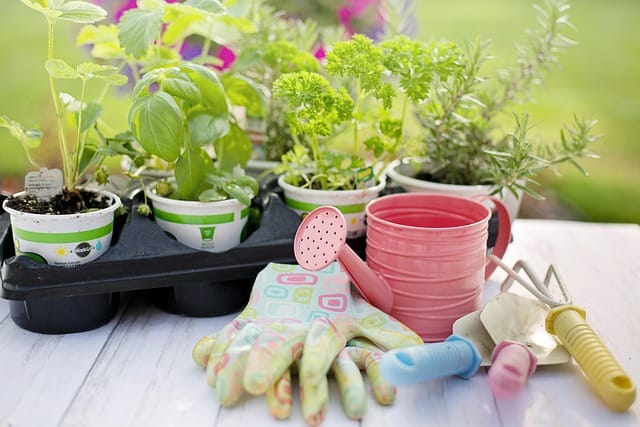
Disclaimer: This post is for informational purposes only and should not be construed as health, wellness or nutrition advice. Please see our full disclaimers here.


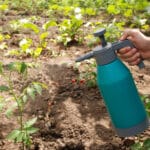
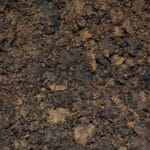
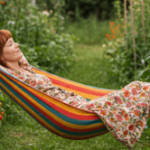
Leave a Reply